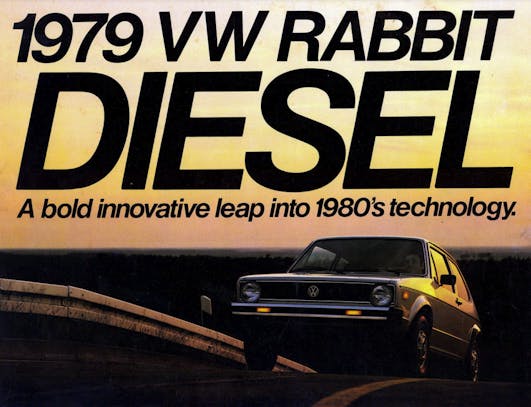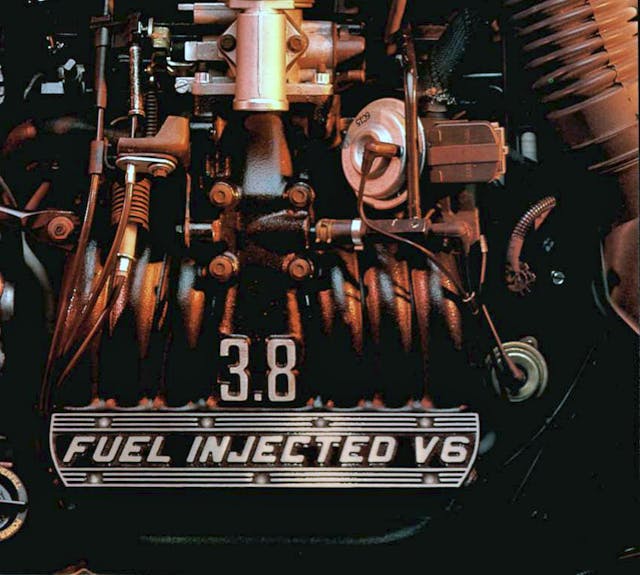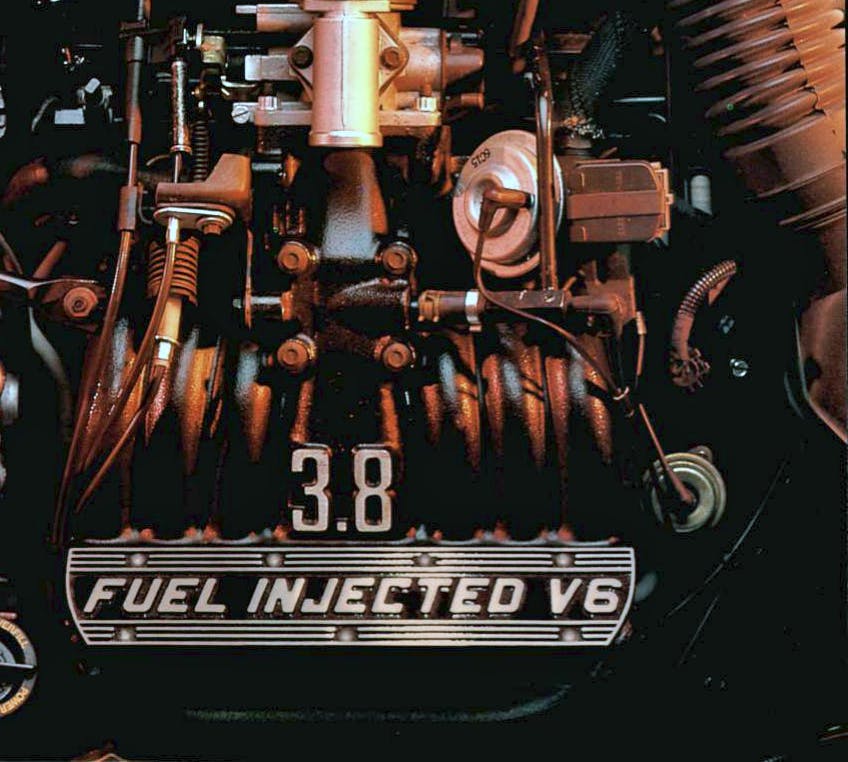Media | Articles
What’s the worst engine you’ve experienced?
We’ve seen the good and the bad in our lives, haven’t we? And when it comes to our passion for the automobile, does anything get us more upset than a poorly performing engine?
Take the photo above, as I am (sadly) quite the fan of Ford’s fairly disappointing Essex V-6. I am painfully aware of the issues with its head-gasket-munching demeanor, but I remain firm in my convoluted logic to find appeal in this mill. Which is irrelevant when the aluminum heads and flawed gasket design take over … but what was the motor that I truly hated?

I was but a young child in the back seat of this poor little VW product. Thanks to its diesel engine, the memories of my family’s temporary ownership of the VW Rabbit linger to this day. (A family friend wanted us to run it periodically while he was tending to family matters in India over the holidays.) I was freezing cold in a damp parking garage, realizing that perhaps a 3-to-4-year-old VW diesel wasn’t as cool as I was expecting it would be. The engine refused to fire up with my Dad behind the wheel for several minutes—an eternity, for a kid my age.
The owner had told us his Rabbit was finicky, but the frustration in my father’s eyes was hard to forget. He had some choice words for the Rabbit, words that kids aren’t supposed to hear. Oh, to be a fly on the wall when my father made a long-distance call to India about that particular VW product.
The diesel Rabbit sputtered and stalled when it was cold, behavior which was kinda terrifying with all the bigger vehicles here on the mean streets of Houston, Texas. Things fared better when it warmed up, but the engine’s 50-ish horsepower meant merging on any of the interstates was an act best reserved for the most faithful of the flock.
Marketplace
Buy and sell classics with confidence
This was the first time I remember my clothes smelling like the fumes emanating from a tailpipe, for better or worse. To this day I wonder how long the glow plugs are supposed to last on these engines, and if this particular Rabbit needed a new set.
No matter, this question remains:
What’s the worst engine you’ve experienced?
Check out the Hagerty Media homepage so you don’t miss a single story, or better yet, bookmark it.





In the mid-’70s, I drove longhaul truck for a fleet operator that leased their rigs. Most of the trucks had Cat engines and either 13 or 18 speed transmissions. As fuel prices rose during the embargo period, the leasing company offered up a Kenworth needle-nose with Detroit Diesel “Fuel-Squeezer” and 6 speed tranny to test out. Guess who was low enough on the pole to get picked to drive it for what was supposed to be 3 months? That thing was so gutless – and the gear ratios so far apart – that even on the slightest grade, I was lucky to be able to manage 20 mph, loaded. Empty, it might get to 50 downhill, but then of course, there would be a corresponding upgrade. Fuel squeezing? Hardly. Most of the big Cats were averaging 4.5-5 mpg. This little longnose managed about 6.0 – mostly because the throttle had to be just about wide open all the time just to maintain forward momentum. Maybe would have been fine for a flat-land operation, but in the mountainous WEST, it was pretty sad. My trips started taking up to twice as long as was projected, and several appointments would be missed every week. After about 8 weeks, the truck went back to Kenworth!
You are correct that combo was gutless, I was a fleet mechanic and had to listen to drivers complain about them
Chevrolet transverse mounted 6 in a Buick Rendezvous. Head gasket at 30K. Which reminds me: every Subaru. I haven’t met a longer term (>50K miles) Subaru owner yet that hasn’t replaced their head gaskets.
1990 Ford 2.9 v6
Purchased new in a Ranger. Should have seen this coming when the transmission had to be replaced 4x for porous castings, and then both heads cracked under a recall. But then less than 50k miles after those heads they were again cracked sufficiently to turn the oil white in 1000 miles. Never will I buy Fords.
Kia 2.5 V6 has Idle Speed Sensor Unit that I’ve replaced numerous times. It runs great otherwise.
I had an 88 Dodge Omni with 2.2 4cyl, was great in Germany with a 5 speed manual -kept up on the Autobahn, I returned to the States, and apparently when they get older, the carburetor is not serviceable (wax for auto choke) and I found numerous Omnis junked at a young age in California because you couldn’t pass smog.
I really hated the gas 350 in my 88 3/4 ton 4WD Suburban. It only had 150 hp and was pathetic. In that vehicle it got 10 City and 13 highway. It could hardly pull anything even with 4.10 gears. It even had a vibration that tortured me for 130,000 miles. GM had to be completely detached from quality to install an engine so mismatched to its purpose.
I doubt if Americans would know about it, less experienced driving it, but GM Holden came up with an abominable 1.9 litre 4 cylinder named the Starfire, in 1980. Based on a cut down six, this god-awful thing used to have a couple of seconds delay between hitting the accelerator and responding, a bit like downloading revs of the internet with a slow connection.
GM direct injection 2.4L installed in 2010 Equinox. A counterpoint for everyone who marvels at the reliability of modern cars. Launched just after GM’s bankruptcy, I should have known they probably cut corners on validation but couldn’t pass up a nice sized SUV that cracked 30 mpg.
It went through numerous high pressure fuel pumps. The timing chain tensioner went bad. The variable cam timing system went out and timing chain would slap like crazy when you started it. It had a bad heat treat on a pin in the cam shaft. Started burning over a quart of oil every 1000 miles and was rebuilt under warranty just before 50k Powertrain warranty expired. And I never got anywhere near 30 mpg on the highway.
Subaru 2.5 liter. Had a 2005 and a 2010. Both blew head gaskets. Out of warranty but I complained and Subaru of America paid for half. Everyone complains about poor head gasket design & construction but I also wonder about open deck block design.
First gen Mazda rotary. You didn’t know of a problem until the check engine light flashed and by then it was already too late.
I had a 2004 RX-8 that I pretty much gave away after getting to the end of my rope with all the rotary engine problems. Ignition coils, oil metering pumps, flooding, high oil consumption, poor gas mileage, ect. When the car started running in “limp mode” for no apparent reason and wouldn’t go over 30 MPH it was dumped. Wouldn’t own another rotary engined car.
In 1988, as my family grew to 4, I needed to trade my Toyota 4 X 4 Pickup for one of the new ones with actual back seats to hold the two children. Unfortunately Toyota did not produce one until a few years later, but Mazda had a very nice looking B2600 4 X 4 that had back seats. This truck had the worst engine I ever had to deal with. I quickly discovered that if you really put your foot into it under a load, the engine would stutter and almost stall. Many trips to the dealer failed to solve this issue. Finally a mechanic took me aside and admitted that Mazda rushed the truck into production without having an engine big enough, so they used a Mitsubishi 2.6 engine instead, but to make it easier to work on for their service people, they adapted their own accessories including the carburetor. Under load the only way the engine could get enough fuel was to link both barrels together all the time. Needless to say, Mazda dropped this truck and you never see any on the road. Terrible truck with a terrible engine, but the actual Mitsubishi 2.6 engine was probably fine in their own vehicles.
I bough a new 1981 Oldsmobile cutlass V6. The engine would ping and rattle just trying to keep up with traffic. Often times it would stall in the intersection. I returned to the dealership on many occasions. It was a really good dealership after eight months they bought back and all I lost was tax and license.
The 1751 CC engine in the original Honda Accord of the 1970’s was known to develop a head gasket leak between #3 and #4 cylinders every 30,000 miles.
It ran strong otherwise but when the engine lost about 50 rpm at idle it was time for another changeout.
The worst was Cadillac’s HT4100 engine. Acceleration was at a snail’s pace, the timing chain went bad twice, etc, etc, etc. I sold this car before the warranty ran out!
1970 BMW2800 rebuilt head and new cam at 72000km,1975 BMW530i cracked head, total destruction at 65000km. 1988 BMW 750iL engine gone at118000 km. BUT 1980 MB 240D replaced the 530i, several sets of tires, brake pads but original rotors, clutch at 333,000km (I asked about a HD replacement and the tech looked at me like I was crazy) one half shaft and light bulbs. Original injectors and glow plugs, rusty, 573,000km and counting.
I had been driving an iron duke 85 Cutlass Calais and while it was reliable it was noisy and weak. I was so excited to get one of the first Quad 4s. More power and much quieter. My love affair ended at 67,000 miles when it had a complete meltdown out of warranty. My very last GM car.